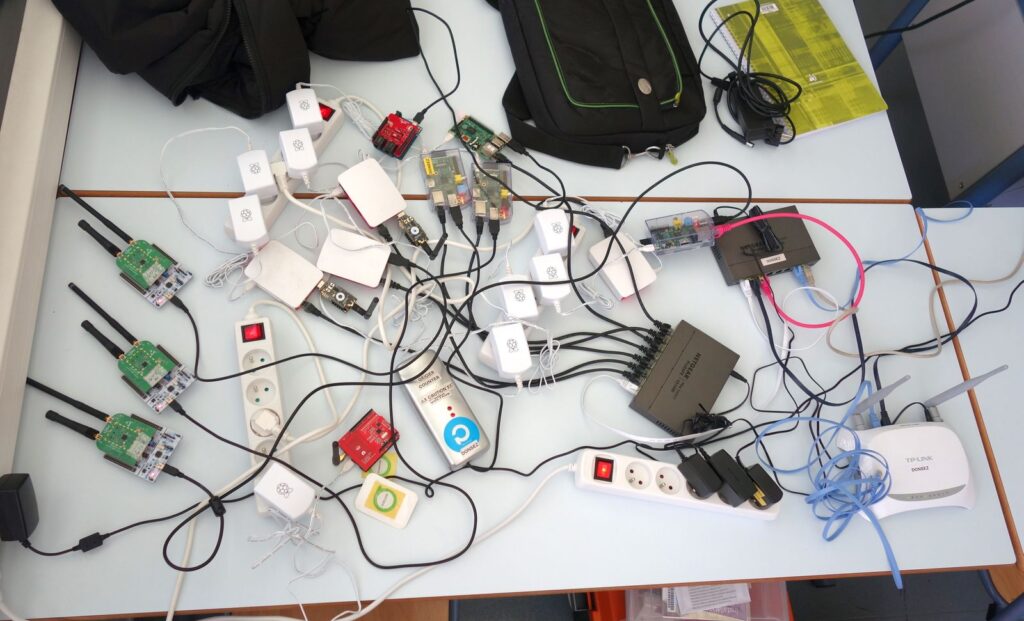Table of Contents
Wireless communication has become an integral part of our connected world, and XBee modules, crafted by Digi International, have emerged as a trusted choice for linking devices and Sensors across various applications.

In this guide, we’ll take a deep dive into the world of XBee modules, focusing on their range, the factors that shape it, and practical tips to ensure seamless wireless communication.
Understanding XBee Modules

XBee modules are a family of radio-frequency (RF) transceivers designed for point-to-point and point-to-multipoint communication. They find utility in a wide array of applications, including Home Automation, industrial processes, remote sensing, and much more.
Factors Shaping XBee Module Range
Numerous factors can influence the range of XBee modules:
1. Frequency Band
XBee modules operate in different frequency bands, such as 2.4 GHz, 900 MHz, and 868 MHz. Your choice of frequency band not only impacts the range but also affects how well the signal penetrates obstacles. Generally, lower frequencies like 868 MHz offer superior range but might require larger antennas.
2. Transmit Power
XBee modules give you the Flexibility to adjust their transmit power. Increasing power can extend the range, but it often comes at the cost of higher energy consumption. Striking the right balance between range and power efficiency is paramount, especially for battery-operated devices.
3. Antenna Type and Gain
The type and gain of the antenna used in conjunction with the XBee module play a significant role in determining the range. Antennas with higher gain can boost the range, but they may have more directional characteristics. Carefully choose your antenna based on the specific requirements of your application.
4. Line of Sight (LOS)
XBee modules perform optimally when there is a clear line of sight between them. Obstacles like walls, trees, and buildings can considerably diminish the range. Always take into account the physical environment when planning your wireless deployment.
5. Data Rate
The data rate at which you transmit information can also influence the range. Lower data rates generally provide better range capabilities, albeit at the expense of data transfer speed. It’s crucial to select the appropriate data rate based on your application’s needs.
Proven Tips for Maximizing XBee Module Range

To make the most of your XBee modules and extend their range, consider these expert tips:
1. Opt for the Right Frequency Band
Carefully select the frequency band that aligns with your range and obstacle penetration requirements. Lower frequencies like 868 MHz are often preferred for longer-range applications.
2. Harness High-Gain Antennas
Explore the benefits of high-gain antennas to extend your communication range. Directional antennas can be particularly valuable for establishing point-to-point links.
3. Strategic Device Placement
Position your XBee modules strategically to ensure an unobstructed line of sight, minimizing the impact of obstacles. When necessary, elevate antennas to improve visibility.
4. Fine-Tune Transmit Power
Strike a balance between transmit power and range based on your specific needs. Lower power settings can help conserve energy for devices operating on batteries.
5. Consider Mesh Networking
For applications requiring extended range beyond a single hop, contemplate implementing mesh networking. In this setup, multiple XBee modules act as routers, enhancing coverage.
Real-World Applications
XBee modules have found a home in an array of fields:
- Home Automation: Seamlessly control smart devices and sensors within your home Network.
- Agriculture: Monitor soil conditions and weather data across vast agricultural landscapes.
- Industrial Automation: Effortlessly link sensors and machines in industrial settings for efficient operations.
- Environmental Monitoring: Collect data from remote sensors in challenging environmental conditions.
- Smart Cities: Enable communication between various urban infrastructure components for enhanced city management.
The Takeaway
XBee modules offer a reliable and versatile solution for wireless communication. However, understanding their range limitations and optimizing for your specific application is paramount. By carefully considering factors like frequency band, transmit power, and antenna selection, you can harness the full potential of XBee modules and ensure robust wireless connectivity for your projects.
Whether you’re crafting a smart home system or deploying sensors in a remote location, XBee modules provide an excellent platform for seamless wireless communication. Delve into the world of XBee modules, and unlock the possibilities of IoT and wireless connectivity across diverse environments.


Leave a Reply